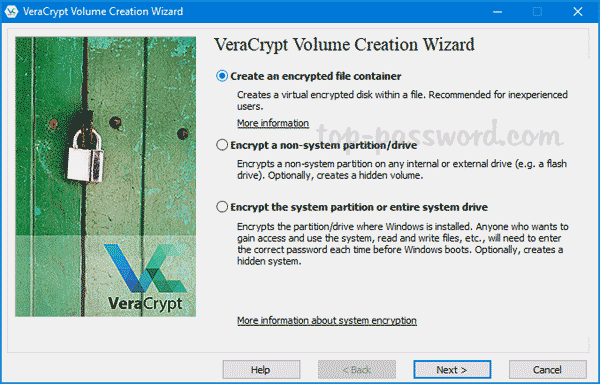

Then answer all questions, which happen to be the same as the GUI wizard.
:max_bytes(150000):strip_icc()/002-how-to-encrypt-a-flash-drive-4628341-deffb596b4b54fbc946bcb999d4d7408.jpg)
When you are prompted for the volume path you wish to encrypt, type the mount point of your volume e.g.

Just type veracrypt -t -create and answer the different questions. Let's say I want to encrypt my USB stick on /dev/sdc1.įor encryption itself, there's an interactive command line mode. It is important to note that Veracrypt supports system encryption for Windows only (see ).īut in Linux, you can still encrypt a non-system drive or partition. Just like the GUI VeraCrypt behaves on Windows.įirst, you mention system encryption. All I want is to basically do something like: veracrypt -encrypt-system-diskĪnd then it will make me enter a password twice and then show a progress indicator (just like the GUI) from 0 to 100%, and then reboot, and then I have to enter the password each time it boots or else it won't start. The reason I don't use "something else" is that they always require pages of cryptic commands which just rub me the wrong way. It's got to be possible from the command line. How do I actually tell VeraCrypt on the command line to encrypt the system (and only) disk? To make it crystal clear, I mean the same thing as is done in the VeraCrypt GUI by clicking: System > Encrypt System Partition/DriveĮncrypting the system disk is by far the most important feature of this software, and the most common use case.
#HOW TO USE VERACRYPT TO ENCRYPT NON SYSTEM DRIVE MANUAL#
I have spent significant time in the manual trying to find this out prior to asking the question. Now I try to use it on Linux on the command line (it's headless). I have used VeraCrypt (and, previously, TrueCrypt) for many years, but always on Windows and with the GUI. I've installed Raspberry Pi OS and VeraCrypt on my RPI.


 0 kommentar(er)
0 kommentar(er)
